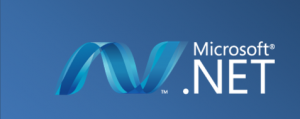 As 2015 comes to close and we head into 2016, now is a natural time to reflect on where we’ve been and where we are going. Software developers and executives can take the time to not just reflect, but also plan for the New Year, considering:
As 2015 comes to close and we head into 2016, now is a natural time to reflect on where we’ve been and where we are going. Software developers and executives can take the time to not just reflect, but also plan for the New Year, considering:
- What I accomplished in 2015
- What I needed to accomplish in 2015 but didn’t finish
- What I am planning on doing in 2016 and
- What I have to do in 2016
We work with software companies and other organizations, helping them develop applications that include business intelligence and analytics. These ISVs and solutions providers often tell us:
- We completed an application redesign, but our customers are still demanding better self-service BI and analytics.
- We didn’t get our new application or enhancement completed on schedule. Now budget and timelines are tight.
- A new application build is in our plans for 2016. How would Izenda help us get a better ROI than building a reporting solution ourselves?
And our favorite,
- Our President, CEO or CIO tells me we have to complete an application redesign next year. I haven’t completed our project plans, so I don’t know what is going to impact my approach.
As a fellow software vendor, we experience many of the same issues. So, to help you in future proofing your applications being developed in 2016, we have documented some of the technology changes that have been announced for 2016.
SQL Server
If you are using SQL Server 2005, you’d better already have a plan in place to upgrade before support ends on April 12, 2016. Security updates will stop on that date. If you can’t assure your clients – or regulators – that data is secure, it will be difficult to continue in business. It’s not just HIPAA regulations that are a concern. Sarbanes-Oxley and the now mandatory Payment Card Industry Data Security Standard are just two more of the overarching rules and regulations that businesses have to follow. It would be difficult to defend your organization after a data breach if you know key software no longer receives security updates.
Microsoft recommends upgrading to SQL Server 2014, skipping 2008 and 2012. With SQL Server 2016 on the horizon, perhaps as soon as late in the first quarter of 2016, that seems sensible. Microsoft recently released SQL Server 2016 Community Technology Preview (CTP) 3.2.
.NET Framework
Developers have known since August 2014 that support was coming to an end for several versions of the .NET Framework. On Jan. 12, 2016, anyone still using .NET Framework 4, 4.5 or 4.5.1 will be risking anything under development as that’s when Microsoft will no longer provide security updates, technical support or hotfixes. It’s just a few weeks away, so hopefully you already had a path to update .NET 4.x projects to supported versions, such as 4.5.2, 4.6 and 4.6. If you’ve still been using 3.5 you’ll be happy to be reminded that it still has support.
If you’ve been following Microsoft’s announcements, then you know things aren’t that dire, as .NET 4.5.2, 4.6 and 4.6.1 are “compatible, in-place updates on top of .NET 4, .NET 4.5 and .NET 4.5.1.” So applications built to target these previous versions will continue to run on .NET 4.5.2 without change and no recompiling of apps is necessary.
This is because .NET Framework 4.4.2 and higher versions have higher compatibility under a new feature called “quirking,” which is a pattern in which .NET Framework version maintains the semantics of earlier versions while still including updated implementations.
However, not being dire doesn’t mean it won’t take some effort. Leonardo Esposito wrote in Code Magazine that ASP.NET 5 brings a new project configuration and management, but it also requires a new Visual Studio and a new and better Nuget. He suggests not approaching it with the mindset of yet another upgrade to roll-out or you’ll miss its power but not additional troubles.
“Like it or not, you won’t be able to ignore ASP.NET 5 for too long,” Esposito also wrote in his article, “What ASP.NET 5 Means to a Technical Manager.”
Windows 10
There’s no getting around Windows 10. The latest Microsoft OS was initially launched on July 29, and owners of Windows 7, 8 and 8.1 have a year from that date to upgrade to Windows 10 for free.
Microsoft seems ready to do whatever is necessary to spur adoption and move everyone to upgrade to its latest OS. In late October Microsoft’s head of the “More Personal Computing” group outlined how the corporation plans to convince Windows 7 and Windows 8.1 users to upgrade. Rather than wait for customers to ask for Windows 10, Microsoft began to automatically send the upgrade to PCs via Windows Update. In 2016 the upgrade will be classified as “recommended.” The upgrade will be downloaded onto consumer’s computers, with an option to cancel the installation when it first begins.
Workers with enterprise editions of Windows 7 or 8.1 certainly have seen a large number of pop-ups asking them to upgrade. At some point, we can expect this to escalate beyond daily “reminders.”
With all the change coming 2016 is shaping up to be another year where organizations have to focus on doing more with less and doing it faster. Embedding a BI and reporting solution is an easy way to avoid the effort it takes to build it.
To learn more about modern self-service business intelligence, request a live demo of our BI software.
![]()
Follow Izenda on social media for the latest on technology and business intelligence:
![]()
![]()
![]()

